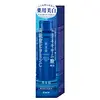What's inside
What's inside
 Key Ingredients
Key Ingredients

 Benefits
Benefits

 Concerns
Concerns

No concerns
 Ingredients Side-by-side
Ingredients Side-by-side

Ascorbyl Glucoside
AntioxidantTranexamic Acid
AstringentCeramide AP
Skin ConditioningOryza Sativa Bran Extract
Skin ConditioningPaeonia Officinalis Flower Extract
TonicSecale Cereale Seed Extract
AbrasiveGlycine Soja Extract
Skin ConditioningHydrolyzed Conchiolin Protein
Skin ConditioningHydrolyzed Silk
HumectantBis-Ethoxydiglycol Cyclohexane 1,4-Dicarboxylate
EmollientButylene Glycol
HumectantGlycerin
HumectantPotassium Hydroxide
BufferingHydrogenated Castor Oil
EmollientHedta
AbsorbentPolysorbate 20
EmulsifyingSodium Citrate
BufferingCitric Acid
BufferingPolyvinylalcohol Crosspolymer
Sodium Metabisulfite
AntioxidantDehydroacetic Acid
PreservativePhenoxyethanol
PreservativeSodium Paraben
PreservativeWater
Skin ConditioningAscorbyl Glucoside, Tranexamic Acid, Ceramide AP, Oryza Sativa Bran Extract, Paeonia Officinalis Flower Extract, Secale Cereale Seed Extract, Glycine Soja Extract, Hydrolyzed Conchiolin Protein, Hydrolyzed Silk, Bis-Ethoxydiglycol Cyclohexane 1,4-Dicarboxylate, Butylene Glycol, Glycerin, Potassium Hydroxide, Hydrogenated Castor Oil, Hedta, Polysorbate 20, Sodium Citrate, Citric Acid, Polyvinylalcohol Crosspolymer, Sodium Metabisulfite, Dehydroacetic Acid, Phenoxyethanol, Sodium Paraben, Water
Water
Skin ConditioningDiglycerin
HumectantGlycerin
HumectantTranexamic Acid
AstringentButylene Glycol
HumectantPEG-8
HumectantPEG-6
HumectantPEG-32
HumectantPPG-24-Glycereth-24
EmulsifyingMethylparaben
PreservativeCarbomer
Emulsion StabilisingPolysorbate 20
EmulsifyingStyrene/Vp Copolymer
Disodium EDTA
Hydrolyzed Hyaluronic Acid
HumectantMagnesium Ascorbyl Phosphate
AntioxidantTocopherol
AntioxidantSodium Hyaluronate
Humectant
 Reviews
Reviews

Ingredients Explained
These ingredients are found in both products.
Ingredients higher up in an ingredient list are typically present in a larger amount.
Butylene Glycol (or BG) is used within cosmetic products for a few different reasons:
Overall, Butylene Glycol is a safe and well-rounded ingredient that works well with other ingredients.
Though this ingredient works well with most skin types, some people with sensitive skin may experience a reaction such as allergic rashes, closed comedones, or itchiness.
Learn more about Butylene GlycolGlycerin is already naturally found in your skin. It helps moisturize and protect your skin.
A study from 2016 found glycerin to be more effective as a humectant than AHAs and hyaluronic acid.
As a humectant, it helps the skin stay hydrated by pulling moisture to your skin. The low molecular weight of glycerin allows it to pull moisture into the deeper layers of your skin.
Hydrated skin improves your skin barrier; Your skin barrier helps protect against irritants and bacteria.
Glycerin has also been found to have antimicrobial and antiviral properties. Due to these properties, glycerin is often used in wound and burn treatments.
In cosmetics, glycerin is usually derived from plants such as soybean or palm. However, it can also be sourced from animals, such as tallow or animal fat.
This ingredient is organic, colorless, odorless, and non-toxic.
Glycerin is the name for this ingredient in American English. British English uses Glycerol/Glycerine.
Learn more about GlycerinPolysorbate 20 is made by combining ethoxylation of sorbitan, ethylene oxide, and lauric acid. It is a mild cleansing agent, surfactant, and emulsifier.
As a surfactant, it helps collect dirt and oils for washing. Emulsifiers prevent oils and water from separating.
Polysorbate 20 also adds scent to a product. Since it is made using sorbitol, it has a sweet scent. Sorbitol can also be found in fruits such as apples and peaches.
The lauric acid used to create Polysorbate 20 is often derived from coconuts.
Polysorbate 20 may not be fungal acne safe.
Learn more about Polysorbate 20Tranexamic Acid is best used for treating hyperpigmentation, discoloration, and melasma. It can also help build a stronger skin barrier.
Once applied, Tranexamic Acid starts decreasing inflammation from UV exposure. Tranexamic Acid also prevents our skin cells from meeting the pigment production cells.
Its brightening property makes it great at reducing the appearance of acne scars and marks.
Fun fact: Tranexamic Acid is also a medication used to reduce heavy bleeding.
This acid is derived from lysine, an amino acid.
Learn more about Tranexamic AcidWater. It's the most common cosmetic ingredient of all. You'll usually see it at the top of ingredient lists, meaning that it makes up the largest part of the product.
So why is it so popular? Water most often acts as a solvent - this means that it helps dissolve other ingredients into the formulation.
You'll also recognize water as that liquid we all need to stay alive. If you see this, drink a glass of water. Stay hydrated!
Learn more about Water